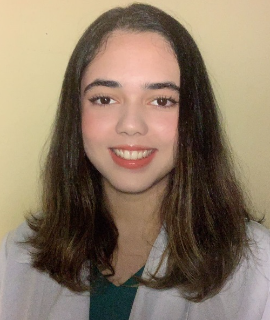Title: Reconstruction Of Zygomatic-Orbital Fracture Produced By Melee Weapon
Abstract:
Facial trauma can be considered one of the most devastating aggressions found in trauma centers due to emotional consequences and the possibility of deformity. The traumas produced by metal instruments are common in wars, personal conflicts and in various accidents, and can cause injuries from minor injuries to extensive and severe fractures. The lesions of the maxillofacial complex represent one of the most important health problems in the world, the zygomatic region is the second area of the face most affected by lesions, surpassed only by the nasal bones. A 20-year-old male patient, melanoderma, presented to the Buco-Maxilo-Facial Surgery and Traumatology Service in Recife, Pernambuco, taken by the Emergency Medical Care Service (EMCS), reporting being the victim of physical assault by a melee weapon. In the anamnesis it was observed that the patient had a conscious state, alcoholized, eupnetic, normocored and fractures in the left fronto-zygomatic regions, left zygomatic body, left parietal, left temporal, left and right jaw, nasal, vomer, ethmoid, and sphenoid, also presenting bone fragments within the orbital cavity. After the clinical examination the imaging analysis of axial tomography, the treatment plan was based on the volemic replacement performed with Ringer with lactate and the patient was referred to the surgical block, where he was operated by the buco-maxilo-facial surgery and traumatology team. During facial reconstruction, there was hemostasis of wounds, debridement of devitalized tissues, removal of foreign bodies and bone spicules, reduction of fractured bones through the wounds themselves, promoting their stabilization through steel wires and rigid internal fixation, with plates and screws, seeking to return the contour of the orbit and the zygomatic region leaving them as close as possible to normality, despite the loss of substance. The bone fragments contained within the orbital cavity caused damage to the left eyeball, with destruction and loss of vitreous humor, causing amaurosis and loss of the left eyeball. After the evaluation of the ophthalmologist, it was necessary to perform the evisceration of the same. Subsequently, the flaps were positioned and the suture by planes was performed with the coaptation of the edges of the wounds in a satisfactory manner. In the immediate postoperative period it was necessary to perform an anterior nasal tamponade due to present rhinorrhagia. In the postoperative period, after 90 days there was a satisfactory facial symmetry, but requiring the placement of an ocular prosthesis to improve the low self-esteem of the patient, due to the psychological and emotional in an attempt to return to normal social life. The success of the treatment depends on the correct handling of the lesions soon after the trauma. In this case, satisfactory bone consolidation was achieved, restoring the function and aesthetics of the patient, including rehabilitation through the ocular prosthesis, with no postoperative complications. It was found that the rapid multidisciplinary intervention, combined with a correct surgical technique, ensures the good prognosis of the patient.




